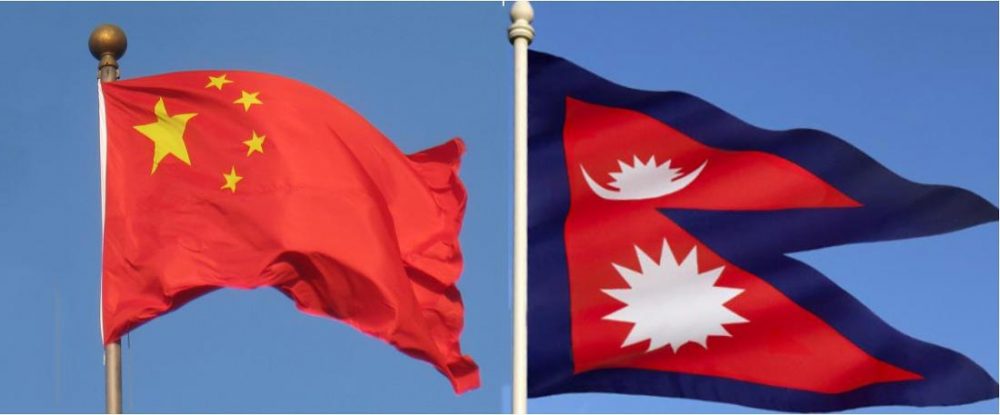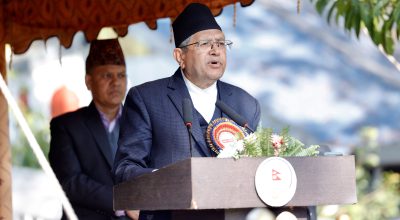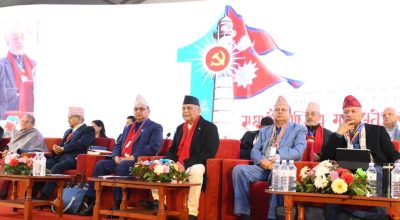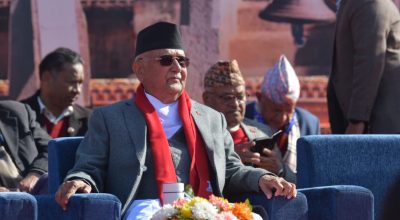
Kathmandu: BRI stands for the Belt and Road Initiative, a large-scale infrastructure development project launched by the Chinese government in 2013. It’s a flagship progam of Chinese President Xi Jinping that connects wider world through land, air and sea. The initiative aims to improve connectivity and promote economic development across Asia, Europe, and Africa. Nepal is one of the countries where the BRI is being implemented.
In Nepal, the BRI is focused on building infrastructure projects such as roads, railways, hydropower plants, and communication networks. These projects aim to improve connectivity within the country as well as with China and other neighboring countries. Some of the major BRI projects in Nepal include the construction of the Kathmandu-Pokhara-Lumbini Railway, the Upper Karnali Hydropower Project, and the Trans-Himalayan Multidimensional Connectivity Network.
While the BRI projects in Nepal have the potential to boost the country’s economic growth and development, they have also faced criticism for their potential impact on the environment and concerns over the terms of the loans and their impact on Nepal’s sovereignty. The Nepali government has emphasized the need for transparency and accountability in the implementation of BRI projects in the country.
However, one of the major concerns about the Belt and Road Initiative is the possibility of countries falling into a debt trap due to the large-scale infrastructure projects funded by Chinese loans. Some experts worry that countries that cannot pay back their loans could end up ceding control of their strategic assets to China or becoming overly dependent on China for financial support.
Critics argue that some BRI projects are not economically viable and are instead intended to serve China’s strategic interests. They also point out that China has a history of offering loans with high-interest rates and strict terms, which could make it difficult for borrower countries to repay them.
However, supporters of the BRI argue that it is a mutually beneficial initiative aimed at promoting economic growth and connectivity. They point out that China has already written off or renegotiated some of the loans it has made to BRI countries, indicating a willingness to be flexible.
It’s important to note that not all BRI projects involve debt financing, and many countries have successfully implemented BRI projects without falling into a debt trap. Ultimately, the success of BRI projects will depend on the economic viability of the projects themselves, as well as the terms of the loans and the ability of borrower countries to manage their debts.
Nepal-China Trans-Himalayan Railway
The Nepal-China Trans-Himalayan Railway is a multi-billion US$ proposed railway project that would connect Kathmandu with the Tibetan city of Shigatse in China. The railway would pass through high mountains and would be a major engineering feat.
The proposed railway is part of the wider Belt and Road Initiative (BRI) and is aimed at improving connectivity and promoting economic development in Nepal and the wider region. It is expected to have significant benefits for Nepal, including increased trade and tourism, as well as improved access to China’s vast market.
However, the project is also controversial due to its potential environmental impact and concerns over the terms of the loan that China would provide for its construction. Critics argue that the railway could have significant ecological consequences, including the disruption of fragile ecosystems and the risk of landslides and other natural disasters.
Despite these concerns, the Nepal government has expressed its commitment to the project, and China has indicated its willingness to provide the necessary funding. The project is still in the planning stages, and its timeline and feasibility are still uncertain. Nepali top leaders have expressed their doubtfullness over the huge investment from Nepal. Nepal has repeatedly saying that Nepal government was unable to borrow such a huge amount of money from China, and requesting Chinese officials to arrange for the Chinese grant.
Benefit of BRI projects to Nepal
Improved infrastructure: BRI projects in Nepal are focused on building infrastructure, including roads, railways, and communication networks. These projects aim to improve connectivity within the country and with neighboring countries, which could facilitate trade and economic growth.
Increased foreign investment: BRI projects in Nepal are expected to attract foreign investment from China and other countries. This could create new business opportunities and support economic development in Nepal.
Tourism development: BRI projects in Nepal, such as the construction of the Nepal-China Trans-Himalayan Railway, are expected to increase tourism to the country. This could support job creation and economic growth in the tourism sector.
Energy development: BRI projects in Nepal include the construction of hydropower plants, which could help to address the country’s energy needs and reduce its dependence on imported energy.
Strengthened diplomatic relations: The BRI is a significant foreign policy initiative for China, and its implementation in Nepal could help to strengthen diplomatic relations between the two countries.
US and Indian concern over BRI in Nepal
The United States and India have expressed concerns about the Belt and Road Initiative (BRI) in Nepal, citing issues such as transparency, debt sustainability, and potential negative impacts on the environment and sovereignty, including Chinese influence in South Asia through Nepal.
The US has raised concerns about the lack of transparency in the financing and implementation of BRI projects, arguing that they are often shrouded in secrecy and lack proper oversight. The US has also expressed concerns about the terms of the loans provided by China for BRI projects and the potential for borrower countries to fall into a debt trap. Instead, the US government has expressed a willingness to work with Nepal to support its economic development, including through infrastructure investments.
















